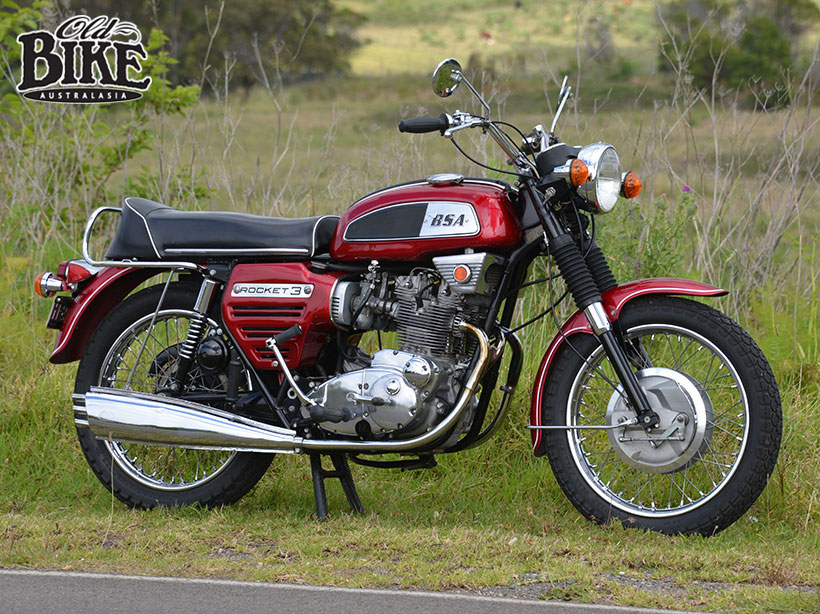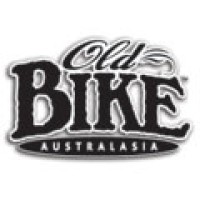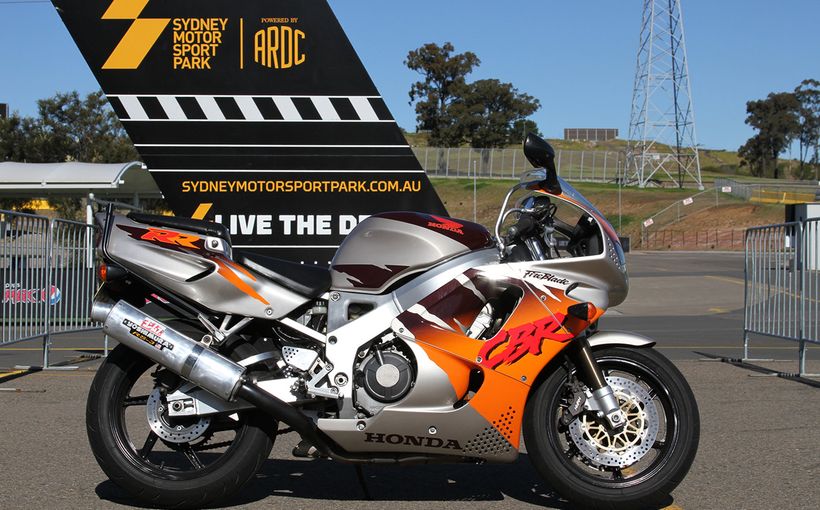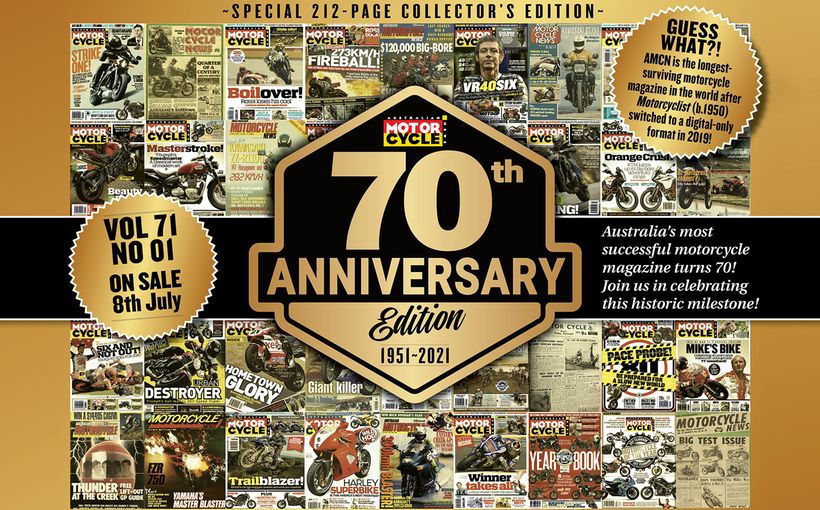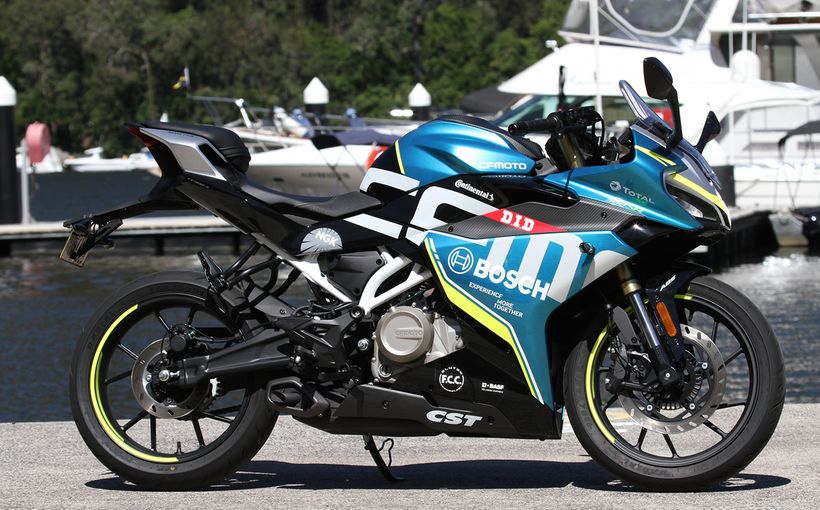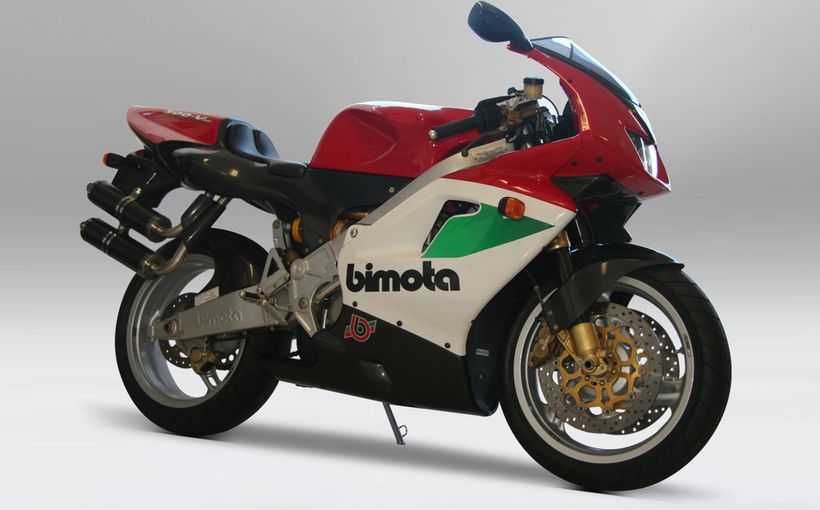Old Bike Australasia: Late thrust - 1969 BSA Rocket 3
Considering that the BSA/Triumph Group was hardly in robust health by the late ‘sixties, it is surprising that it chose to develop its new ‘superbike’ (a nascent term in those days) in two quite different forms – the Triumph version with vertical cylinders and the BSA with the barrels canted forwards. Just why the company should involve expensive additional tooling for what was essentially a cosmetic exercise defies conventional thinking, but British management of the time what not renowned for commercial wisdom.

In reality, the new triple owed more to Triumph practice than BSA and was a result of the combined efforts of designers Doug Hele, Bert Hopwood, and Jack Wicks. Hopwood was the man primarily charged with getting the concept past the board, and he argued (successfully) that a three-cylinder engine would virtually eliminate the inherent bugbear of the Triumph twin design which dated back to 1936 – vibration – thanks to the 120º crankshaft. From the start, the design team concentrated on minimising the width of the power unit, and Doug Hele produced a new and very compact clutch which went a long way towards that aim. It took fully twelve months from first drawings to having a power unit running on the test bench, and it showed 58 bhp at 7,250 with quite acceptable levels of vibration.
Hopwood’s views were supported by the Group Chairman, Harry Sturgeon, but the project, and other important management issues within the group, suffered when Sturgeon’s health deteriorated, forcing him to delegate responsibilities to less gifted individuals. Sturgeon died in 1966, and as Hopwood noted, “From that moment on, we plunged from slow and painful recovery into an era which was to prove the final countdown for the remnants of an industry which had once led the world.”

Production of the new triples was further delayed when the management appointed Ogle Design to restyle the bikes. On its CV, Ogle had such dubious creations as the Reliant Scimitar, the Bond Bug, and let us not forget the Plaxton Panorama. This resulted in a major departure from the style of the prototype, which employed similar lines to the popular Bonneville, and which was panned by the influential US importers. Still, management had paid good money for the Ogle input – so production went ahead in this form.
As things turned out, it was not until late 1968 that the two British triples finally appeared, and far from being badge-engineered, they were substantially different in many areas – engine, frame, seat, mudguards and minor fittings. While the BSA used a duplex cradle frame, the Triumph version had a single front down-tube; a feature that created problems in routing the centre exhaust pipe. The Americans – primarily the market for which the new triple had been created – rejected both models, particularly the BSA version, forcing the design department to stage a major rethink. Ironically the result, which appeared for 1971, was substantially reminiscent of the original 1963 prototype!

Between a Rocket and a hard place.
The BSA version of the triple was labelled the Rocket 3, or officially the A75, while the Triumph became the Trident or T150. As previously stated, the BSA had its cylinders inclined forward, which dictated that the crankcases also differed from the Trident, as did the covers for the timing side and gearbox. The block was cast in aluminium alloy with pressed-in iron liners which were deeply spigotted into the cases. As the crankshaft was a forging, bolted-up light alloy conrods were used. The cylinder block casting also carried the alloy tappet guide blocks which were pressed into place; one between each cylinder at the front and rear of the block. Those on the right side carried a pair of tappets while the left one had a single tappet. Into these fitted the aluminium pushrods which had hardened steel end caps.

Up top sat the cylinder head; a single casting with two separate finned rocker boxes, one each for the inlet and exhaust valves. The inlet manifolds were bolted on in three separate steel units, while the exhaust flanges were screwed into the head casting. Down below, a triplex primary chain, tensioned by a steel blade, drove from a sprocket mounted on the outside of the oil pump drive, and to reduce overhang on the crankshaft, the alternator was fitted to the off-side, inside the timing case. A car-style Borg and Beck Diaphragm single-plate clutch was located in a casting between the inner primary chaincase and the gearbox housing.
Located transversely under the steering head was an oil cooler, fed by a scavenge pump, but otherwise the lubrication was by conventional dry sump with a gear pump in the left crankcase driven by spur gears from the crankshaft. On top of the crankcase sat a rev-counter drive, driven by skew gear from the exhaust camshaft, which also drove the contact breaker cam and advance/retard mechanism with three sets of points. First shipments used conventional battery with three separate coils for the ignition system, but soon into the production run, models began appearing with the Lucas Capacitor system with the generator supplying the ignition, but retaining the points as a trigger.
Mixture was supplied by three Amal Concentric carburettors which were connected to the inlet stubs via short rubber hoses. Uniquely, the carbs operated without individual throttle springs; instead being controlled by a throttle linkage mounted on the manifold and controlled by a single spring.

Possibly the most distinctive feature of both the original Rocket 3 and the Trident was the oval, tapered silencer, each having three tailpipes. These were quickly referred to in the US press as ‘Rayguns’ and the name has stuck ever since. The exhaust system itself consisted of three exhaust pipes which became four when the centre pipe split into two and joined the outer pipes.
Chassis-wise, the Rocket 3 was fairly conventional. A single top tube frame braced by a second tube connecting the bottom of the steering head had duplex down tubes running under the engine and up to the swinging arm pivot. Here again, the BSA frame was completely different to the Trident, which used a single down tube with a bolted-on sub frame. Front forks were virtually identical to those used on the BSA and Triumph twins of the time, and the front wheel was also Triumph-sourced; an eight inch, twin leading shoe job with an air scoop.
The front mudguard was another uniquely styled affair, with a pronounced point on the front and a single bottom stay, while the rear mudguard followed conventional pattern. Standard décor was a black frame with the tank, side covers and mudguards finished in red with white pin striping. A few of the early Rocket 3 models were also produced in lime green with red striping.
Get it while it’s hot
Such was the rush to satisfy the hungry US market, the Rocket 3 was not initially catalogued for Britain, but by early 1969 this had been rectified, with a price tag of 614 pounds 2 shillings and five pence (!). Unfortunately, the home-market launch coincided with the release to a slathering press not only the CB750 Honda, but the wild Kawasaki H1 Mach III two-stroke triple, both of which had five-speed gearboxes. The Honda also sported a disc front brake, and electric starting – both huge selling features that were hitherto basically unheard of on motorcycles.

To combat this opposition, BSA/Triumph began an aggressive racing program, both in USA and in Britain. In addition, a team attacked existing speed records at Daytona using a basically standard Rocket 3 which set up new marks for 5, 15, 20, 25 and 50 miles at just over 130 mph.
Minor changes were made to the production triples for 1970, but they were outwardly unaltered. After a slow start, sales in the US and other export markets were encouraging, but the BSA Triumph Group itself was far from healthy. For 1971, the Rocket 3 received a new front end with conical front and rear hubs and more modern looking forks that dispensed with the traditional rubber gaiters, and new megaphone style silencers. Some had the frame and hubs finished in silver/grey, and these rare birds are extremely collectable today. The majority had a black frame, hubs and fork sliders. US models were available with a fuel tank similar to the earlier twins and Gold Star singles, finished in chrome and red with BSA ‘star’ badges, while the original style tank with chrome side panels was retained for the home market. This was to be the final form for the Rocket 3, which disappeared in 1973, although the Triumph soldiered on in T150 and later T160 form.
As Bert Hopwood had prophesied, had the Rocket 3/Trident come onto the market in 1964, it would have grabbed a much bigger share of the market that eventually went to Honda. The triples may also have developed further into OHC versions with five-speed gearboxes and electric starting and stood their ground in the sales boom that was the early ‘seventies. The final 200-odd Rocket 3s assembled actually did sport five-speed gearboxes – top being an overdrive that was a boon for US-style freeway cruising. But it was too late to save BSA.
Protect your BSA. Call Shannons Insurance on 13 46 46 to get a quote today.

